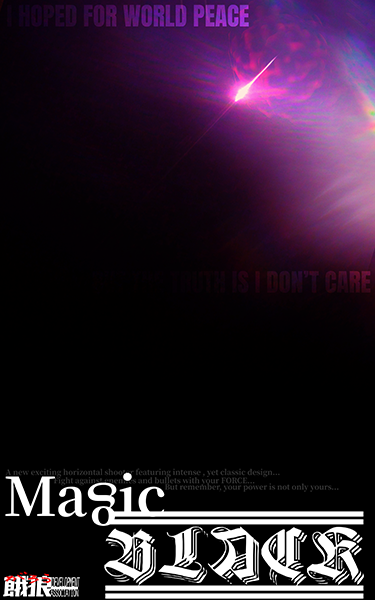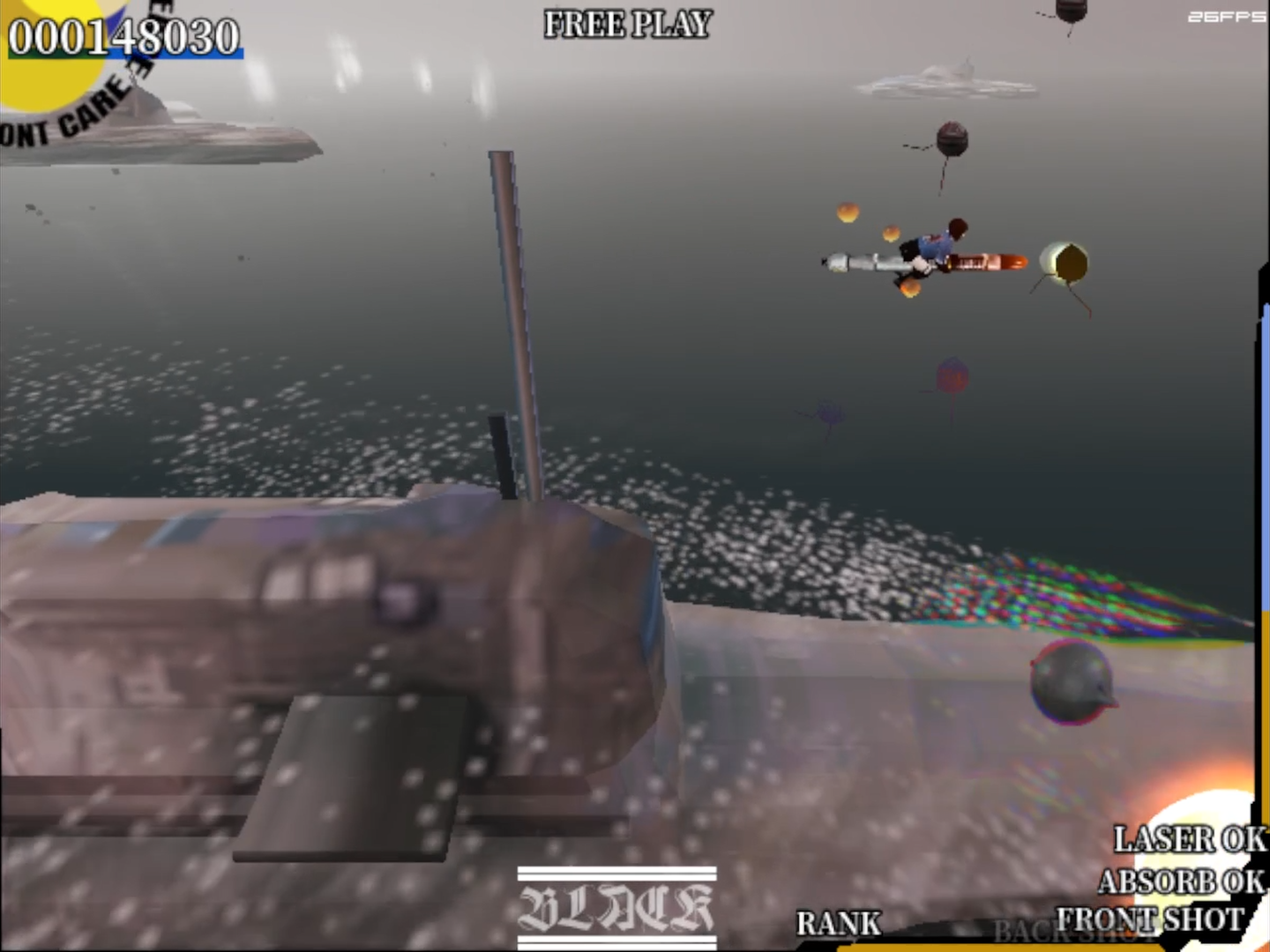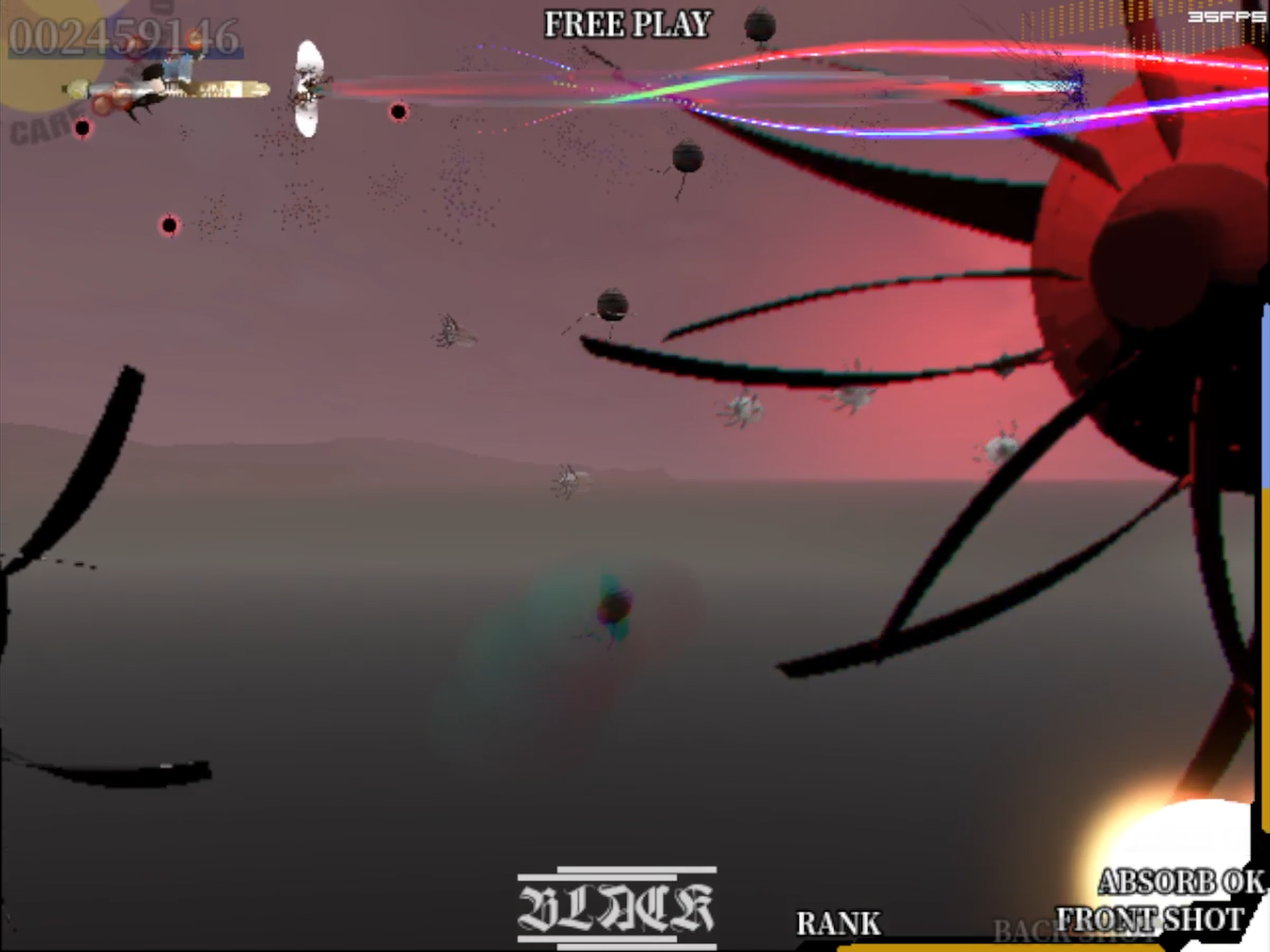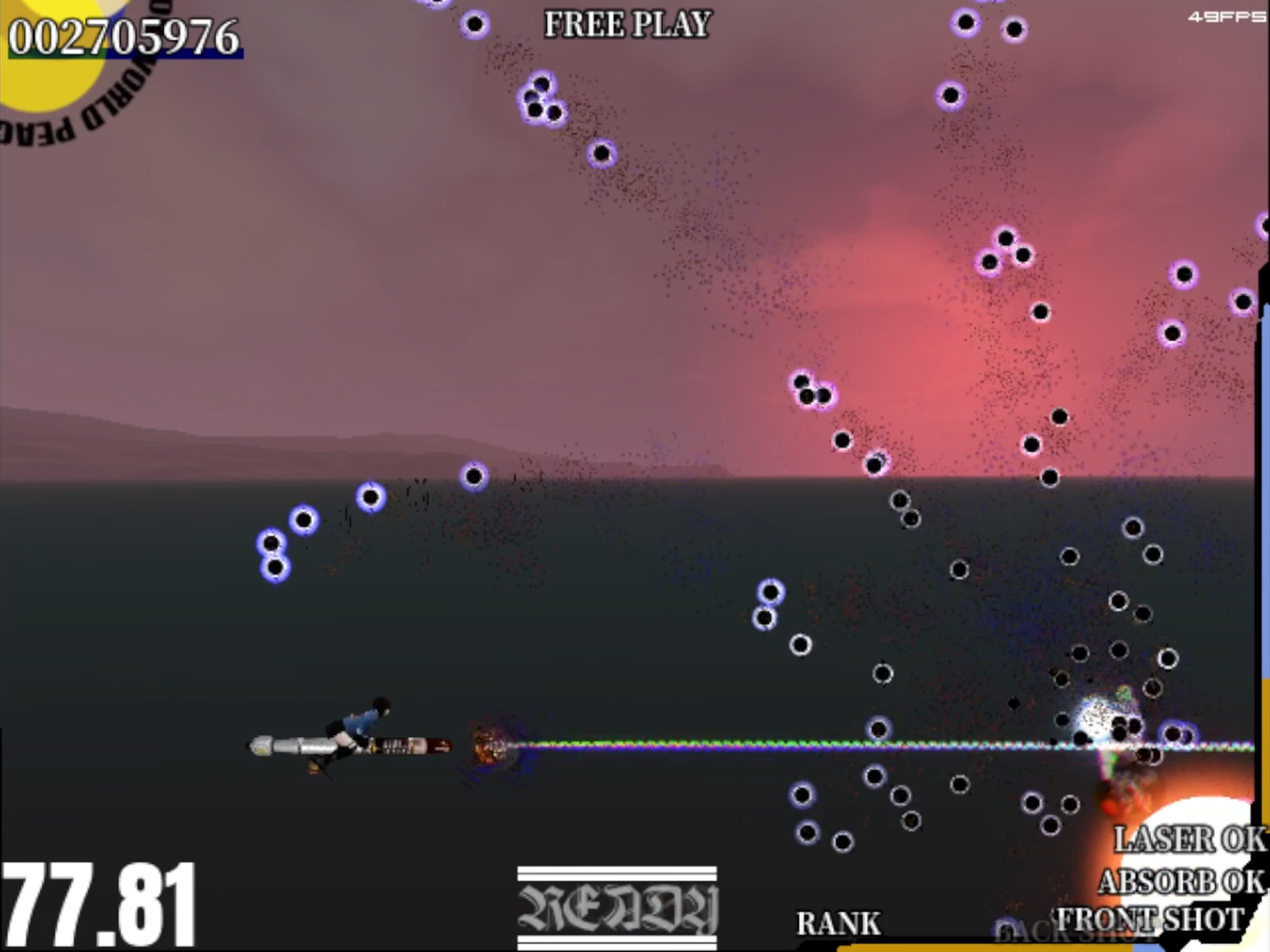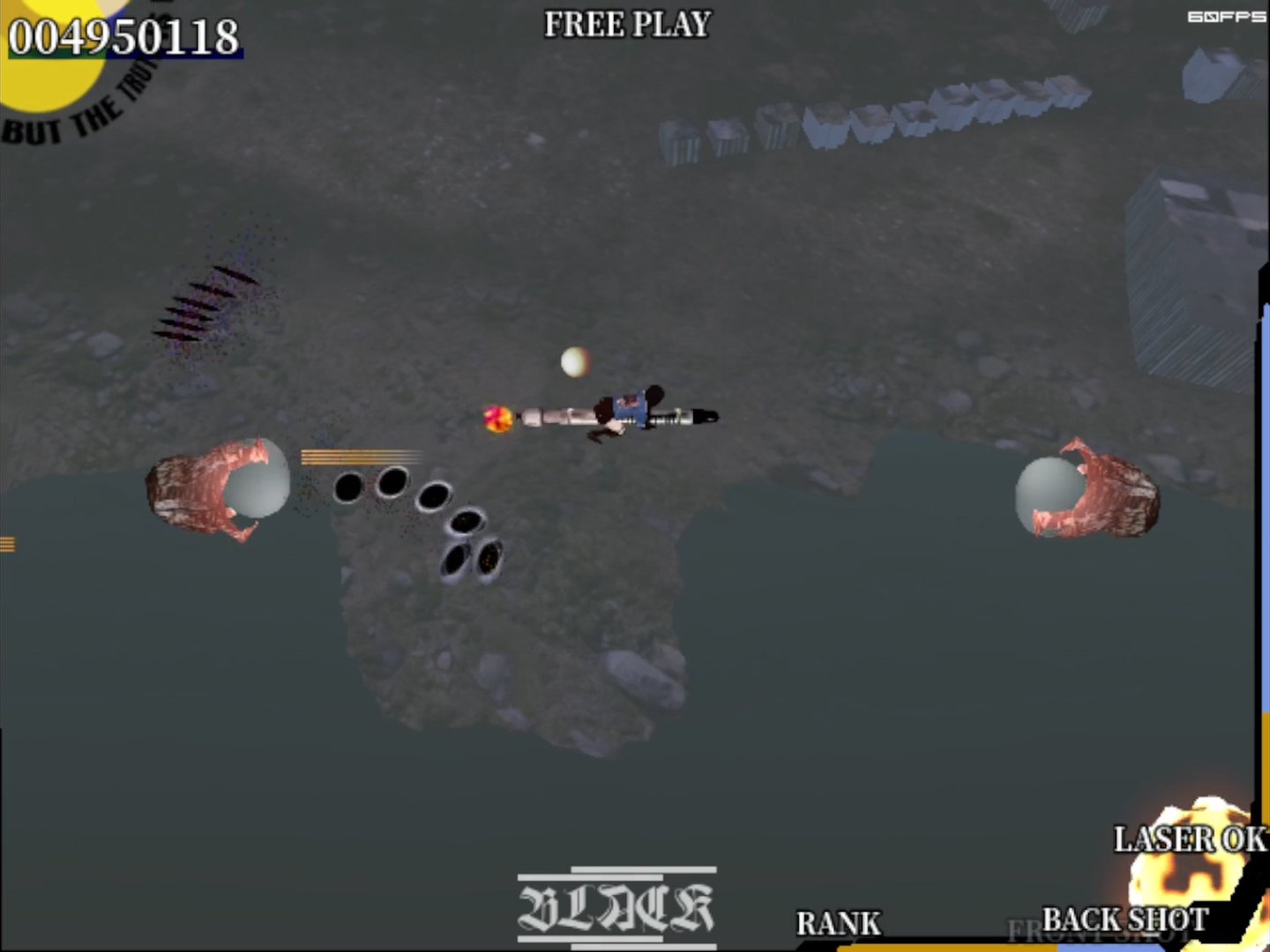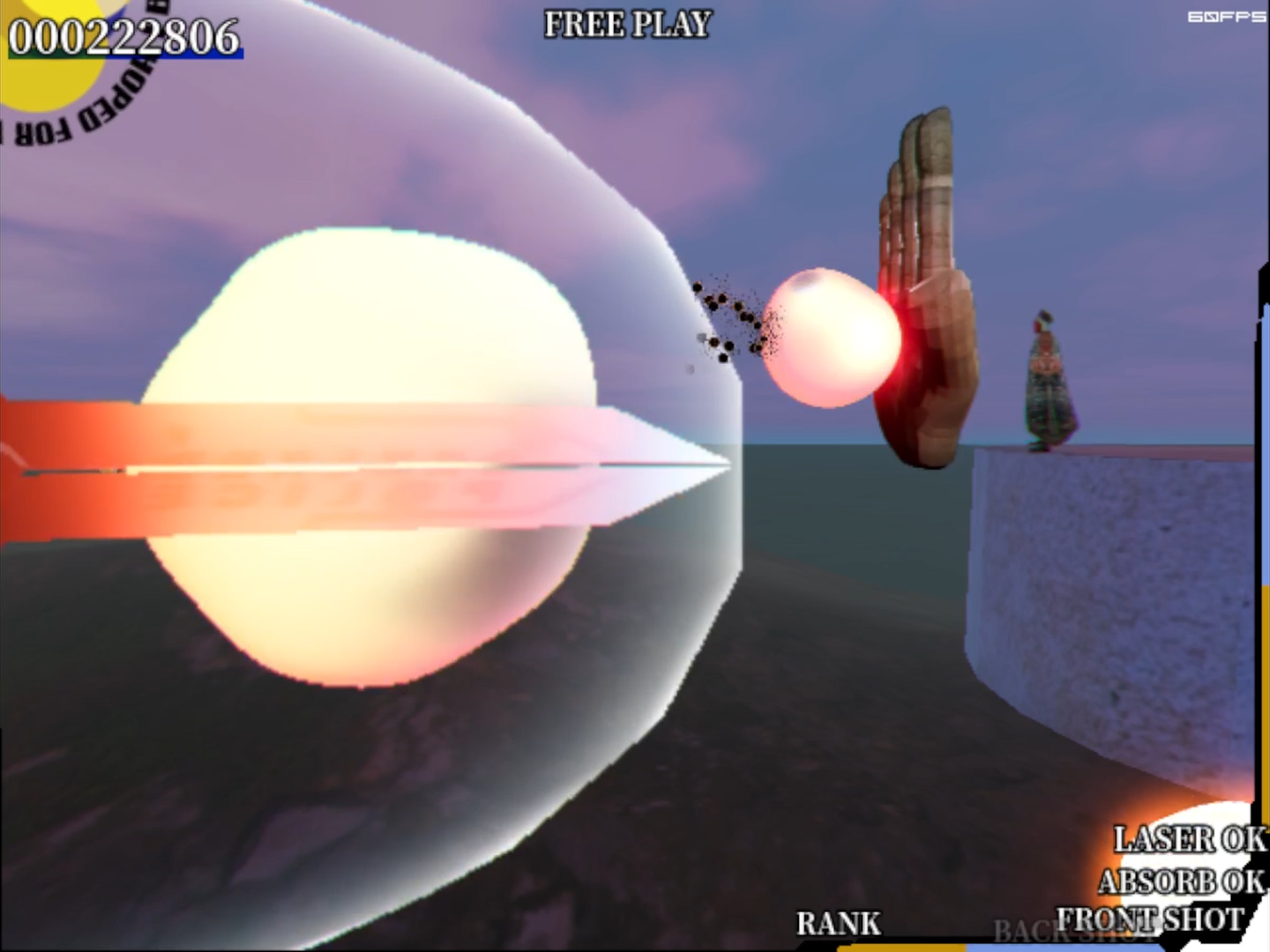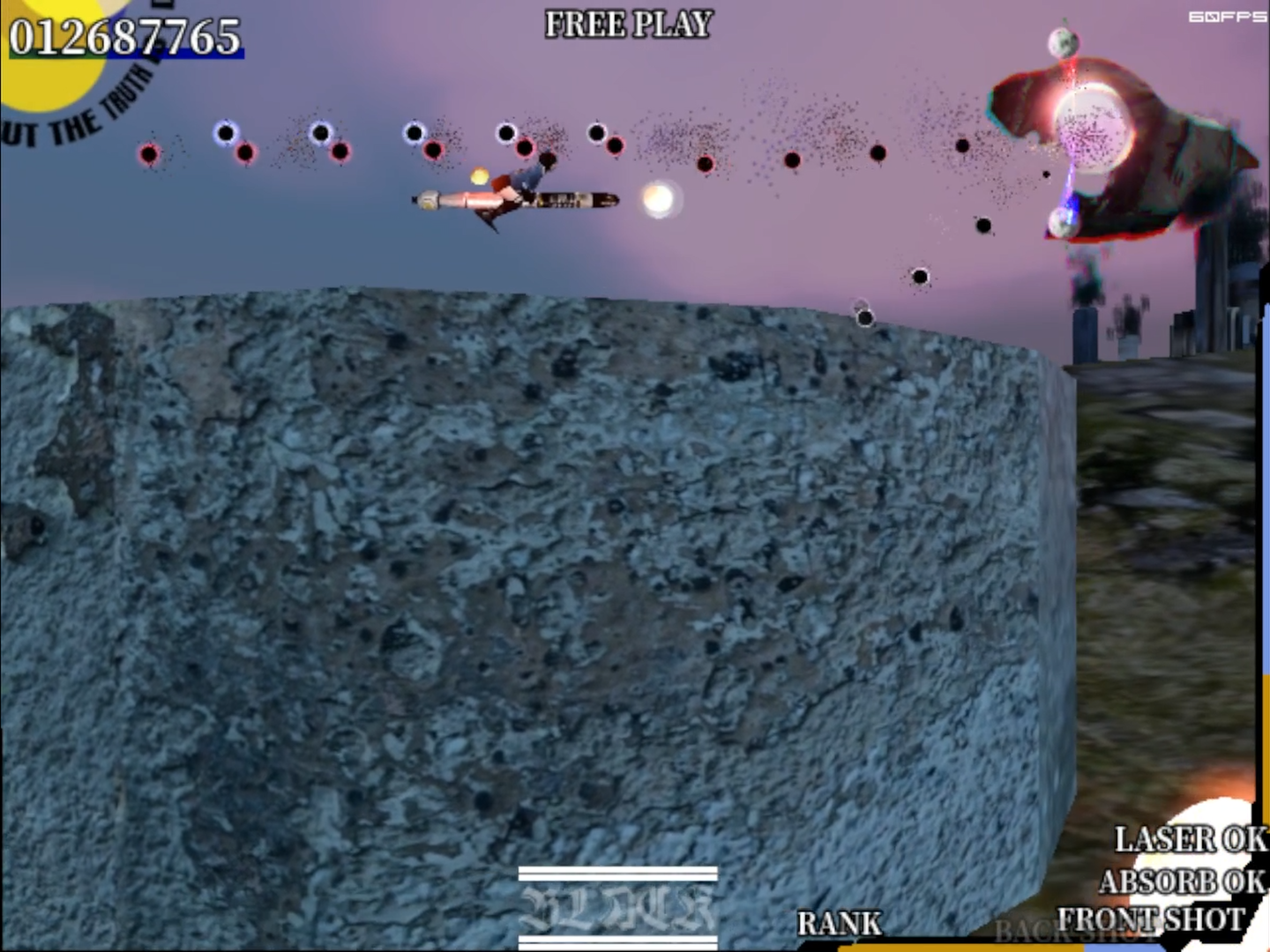
- CHARACTER ⇱



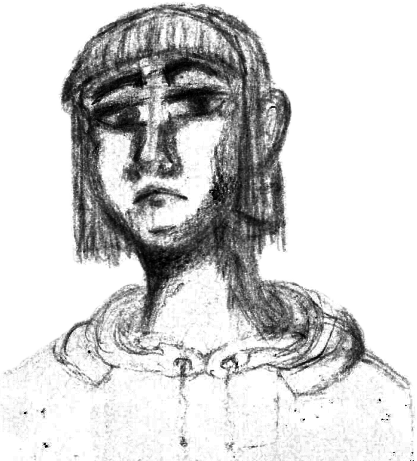
- SYSTEM ⇱
- SCORING ⇱
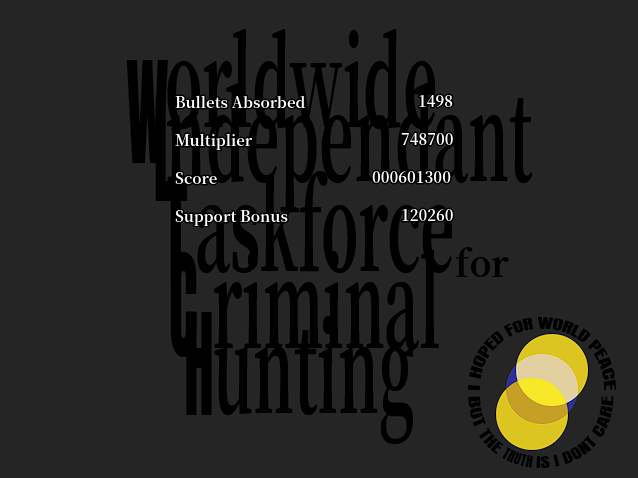
- DIFFICULTY ⇱
As of the current demo build, BLACK is not yet properly designed and represents a version of Hard mode locked at max rank, named so as a "black label" arrange, as well as a mode where the use of D, the Support button (BLACK's ship), doesn't decrease rank, altering when and where it can be used for score. It is playable to give the player an idea of how the fixed rank affects overall gameplay and routing.
- PLANNED FEATURES ⇱
- Some example tracks below
- Brief FAQ ⇱
I don't like adding art to the side, it's distracting. Black bars are better because they don't draw your eyes away from the action on the screen. "Wasted screen space" is a fallacy, a well designed game uses the screen space it requires, no more, no less. You're staring at the center of the screen when you play anyway.
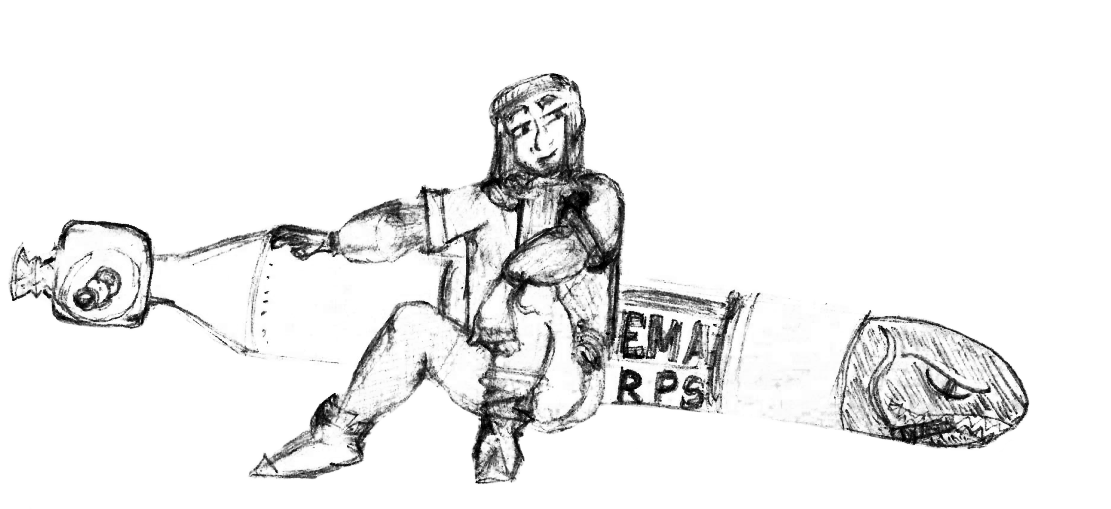
- STORY ⇱
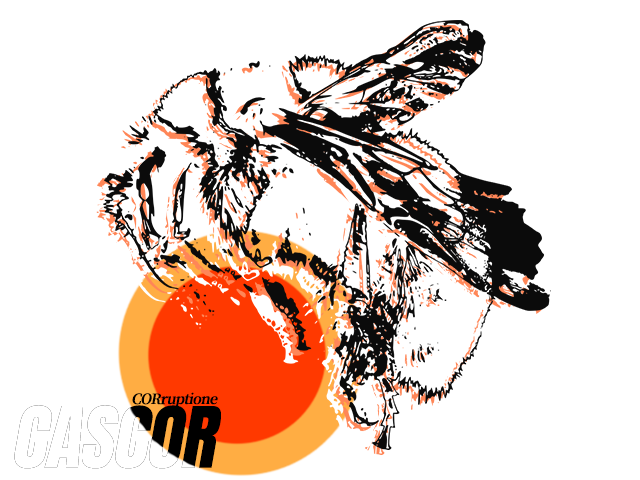
- TARGET ⇱





- RANK ⇱
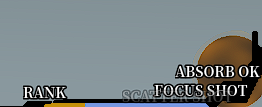
- Additional comments ⇱
- Why do this
Yet, also, as those who are "creative people" know, when you make something, there is always something personal and intrinsic to you that comes out, and that's what makes it interesting to make things. The more I've put time into my projects, the more I realize that what I get from things is different from others, and that makes what I want to do more interesting, at the very least conceptually. In all of the things I do, I know I can improve, but in this thing, taking on the task of doing everything myself, I've become a better artist, composer, and programmer, because I am continually challenging myself. Just as when I first started working on trying to reverse engingeer Buriki One without any ability to play the game back when I was in college, I'm always interested in challenging myself to do something that is probably impossible, if only to do it for the sake of doing it. I don't know if what I make will be good or bad, a masterpiece or just another game--the dreaded Euroshmup is still a design decision that matters to the developer--but I do know that I've put what I love and enjoy in these kind of games into it, and that's enough for me.
If you want to do something, then do it. And finish it.
- My design philosophy
[second new comment for demo]While I was tweaking everything, I came up with this identity crisis again. What I enjoy in the games I play is often this sparse suffocation, where patterns are small, but the rate formations arrive can cause them to fill the screen in a way that creates some sort of stress on the player. A lot of classic 90s games, especially horizontal ones, don't have a lot of bullets, but this is counterbalanced by how the bullets work. While I work on the waves, I find myself going back to look at Cave games for some reason, because I have, to some degree, accepted the common perception that Cave games are STG, and that if a game is not danmaku, then it is not good, despite me not playing those types of games, and not really liking them. So, then I go back to play Lords of Thunder, or Thunder Force, or Harmful Park, etc, whatever I feel like booting up while I take a break, and I remind myself that what I like from these games is still STG, and I shouldn't try to use other people's expectations of STG as "bullet hell" to determine what I want to make.[/second new comment for demo]
- About me and some trivia ⇱
- My favorite shmups and some more personal anecdotes
Cotton: Fantastic Night Dreams
Lords of Thunder
R-Type
Battle Mania (1&2)
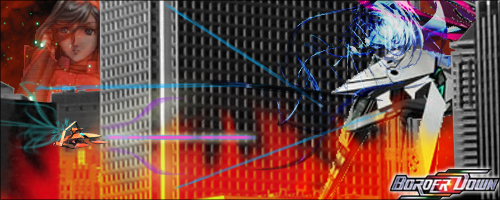
The original creation date reads June 2010, so my date for when I began my obsession with the game wasn't just me guessing a random date in the end.
With that in mind, I do want to bring up a funny story about my time in college related to my 2010s obesession with the game. It was probably around 2014-15 or so, I can't remember exactly, but I brought my dreamcast into the dorm and started playing Stage 1 Green, and one of my dormmates who saw me not just playing a dreamcast, but also a shmup, wanted in. I didn't realize how hard the game was on first play until I saw him just die to the first formation, but that's also where I realized how great the game was, because the surface of it sort of obscures how hard it actually is, because it wants you to learn how to play it, not just come in casually and beat it with experience gleaned from other games. Truly a genius game.

